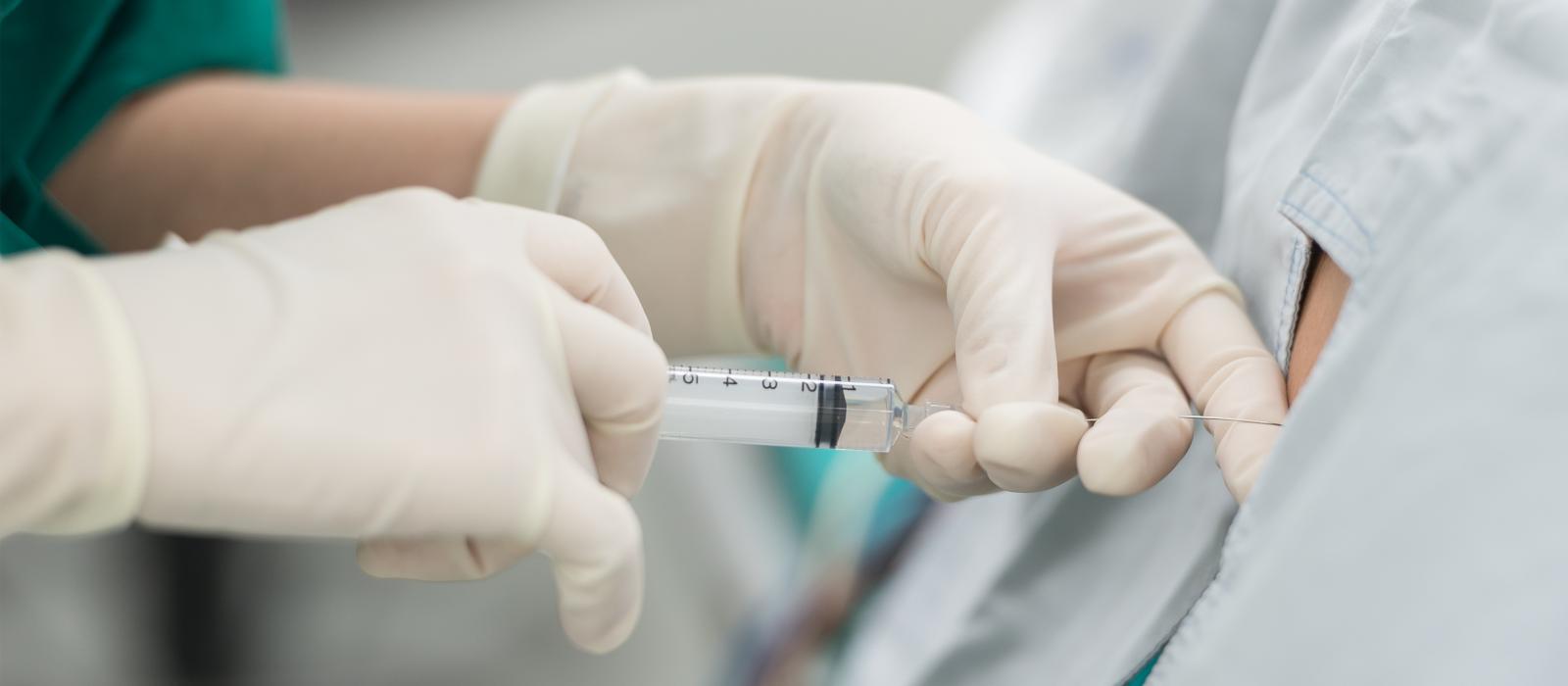Introduction
Thoracic medial branch block is a diagnostic test to ascertain whether pain in the middle section of the back is arising from the facet joints (see facet joint syndrome for more on the facet joints) in the thoracic section of the spine.
The test works by temporarily interrupting pain signals from this area transmitted to the brain via the medial branch nerves (that supply sensation from the facet joints), by injecting a small quantity of local anaesthetic directly to these nerves. Where pain is significantly reduced, this indicates that the facet joints are the source of the pain.
A thoracic medial branch block generally lasts for 24-48 hours, but in some cases it may continue to suppress pain for longer.
To accurately diagnose facet joint related pain you may need two sets of thoracic medial branch blocks.
Indications
Back pain, potentially arising from the facet joints.
Preoperative Instructions
For a thoracic medial branch block (as a primarily diagnostic procedure), it is important to be able to reproduce the pain at the time of the procedure. For this reason, you should stop taking any pain medication around 5-6 hours beforehand. If there is no pain on the day you are due to undergo a thoracic medial branch block, we may suggest postponing it to a later date.
You should avoid undergoing any other medical procedures, such as for example dental treatment or a colonoscopy, within 48 hours (before or after) of a thoracic medial branch block.
Please also let us know ahead of the procedure if…
- You are taking any antibiotics.
- You have a pacemaker or defibrillator.
- You are ill (in which case we may need to postpone the procedure).
You should also not drive yourself to or from the appointment.
Procedure
You are asked to lie face down on a theatre table. At this point you may also be given a general anaesthetic agent.
The injection site is then cleaned and numbed with a local anaesthetic and a thin needle is inserted at the injection site and then guided (using a mobile x-ray image) to the correct position.
Before the anaesthetic is injected, a small quantity of contrast dye is introduced to check that the anaesthetic will get to the target area.
Once the procedure is complete, you will need to spend around half an hour under observation before being able to go home.
Postoperative Instructions
After the procedure you are able to return home, but you will not be allowed to drive yourself home. There is no restriction on day-to-day activities. You will be asked to complete a 24-hour pain diary.
Risks
A thoracic medial branch block is a relatively low-risk procedure – however all medical treatment comes with some level of risk. Possible complications may include…
- Pain.
- Bleeding.
- Infection.
- Pain at injection site.
- Nerve damage.
- Low blood pressure.
- Allergic reaction to anaesthetic.
